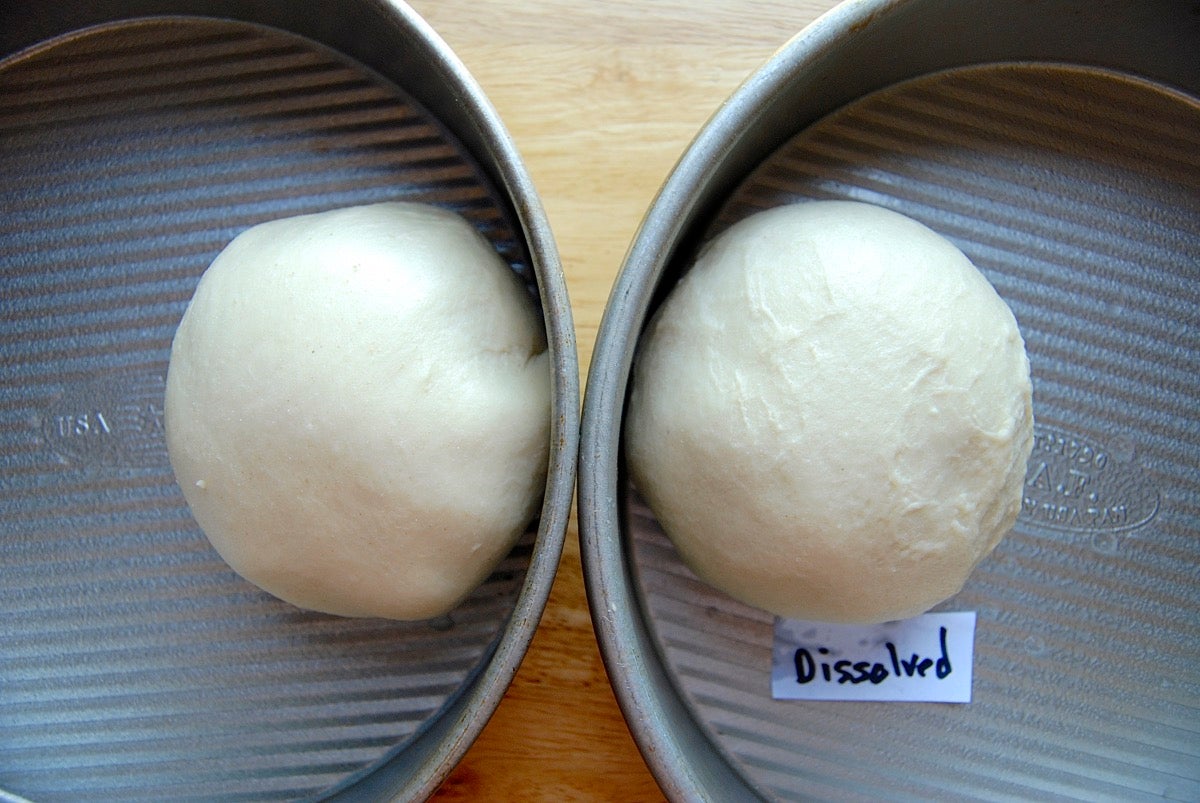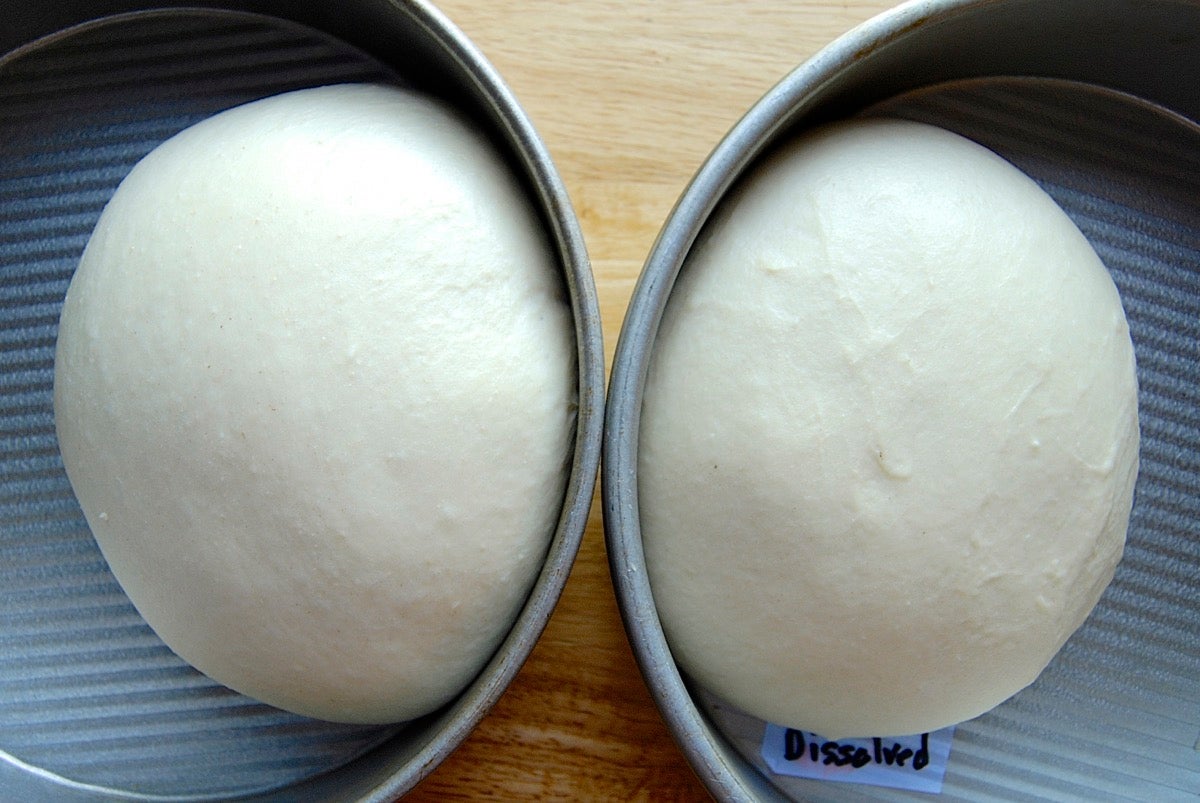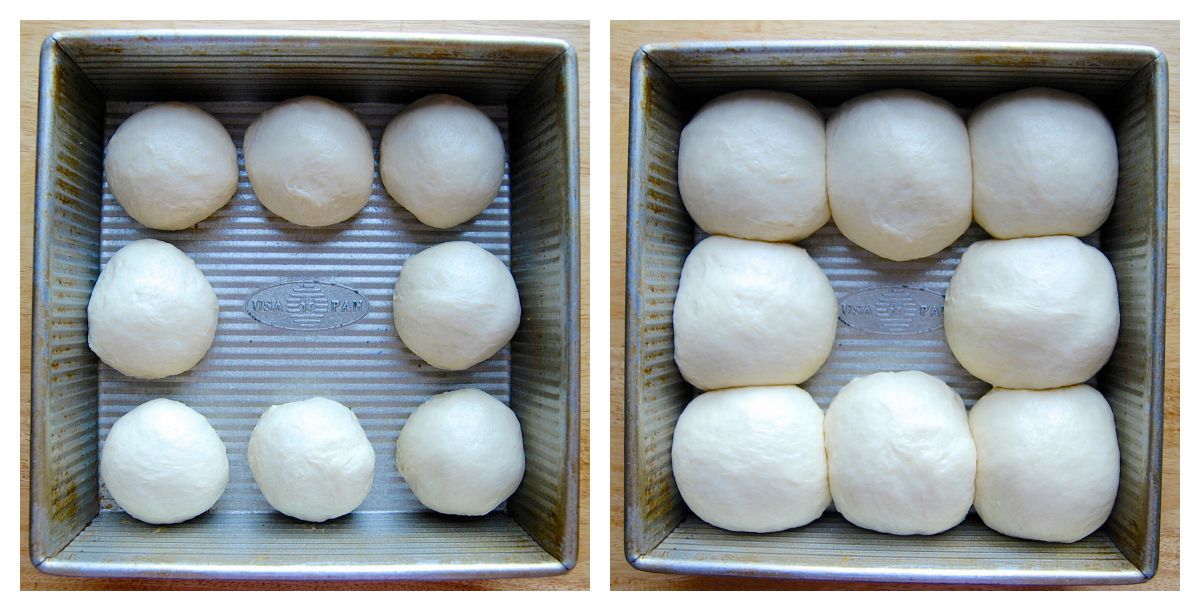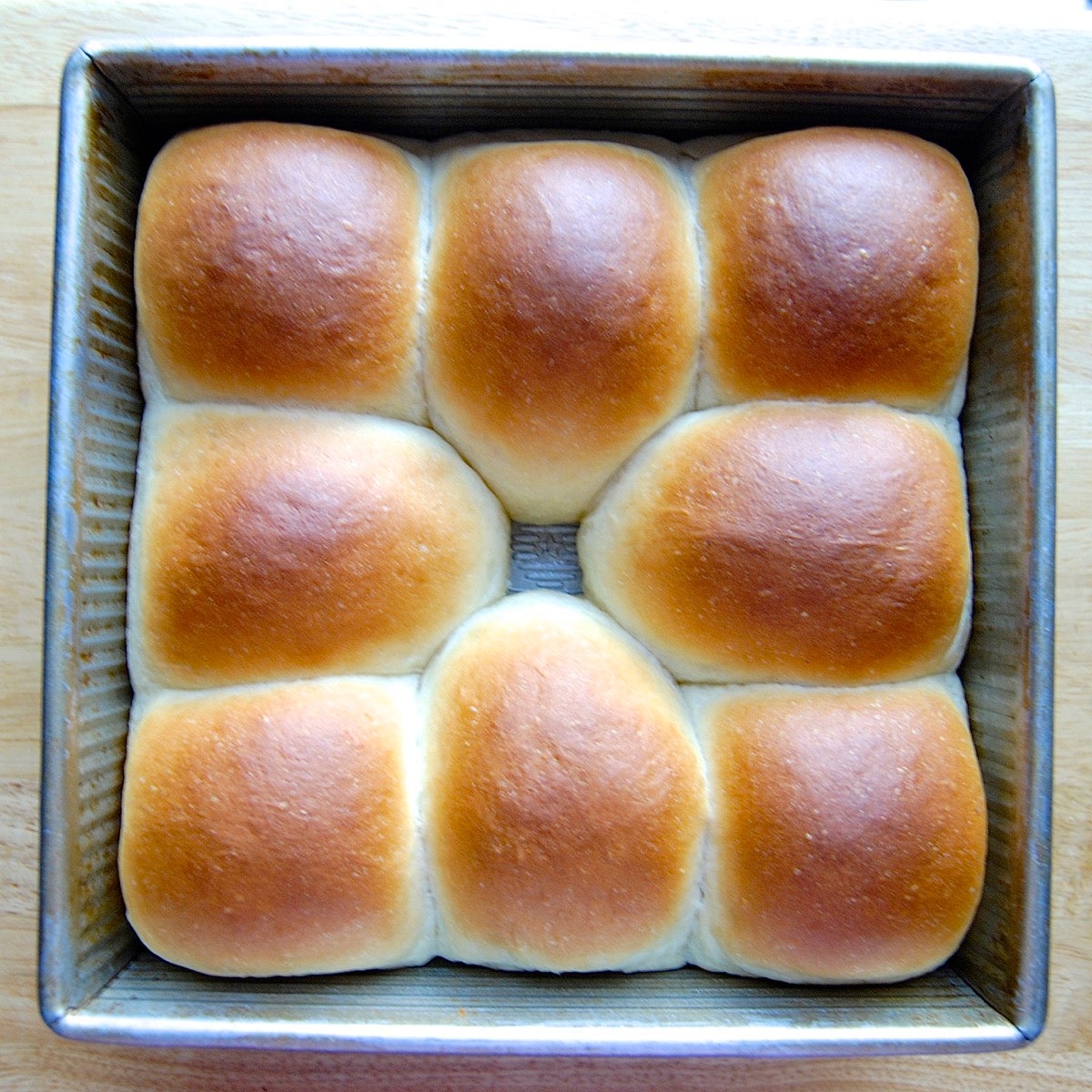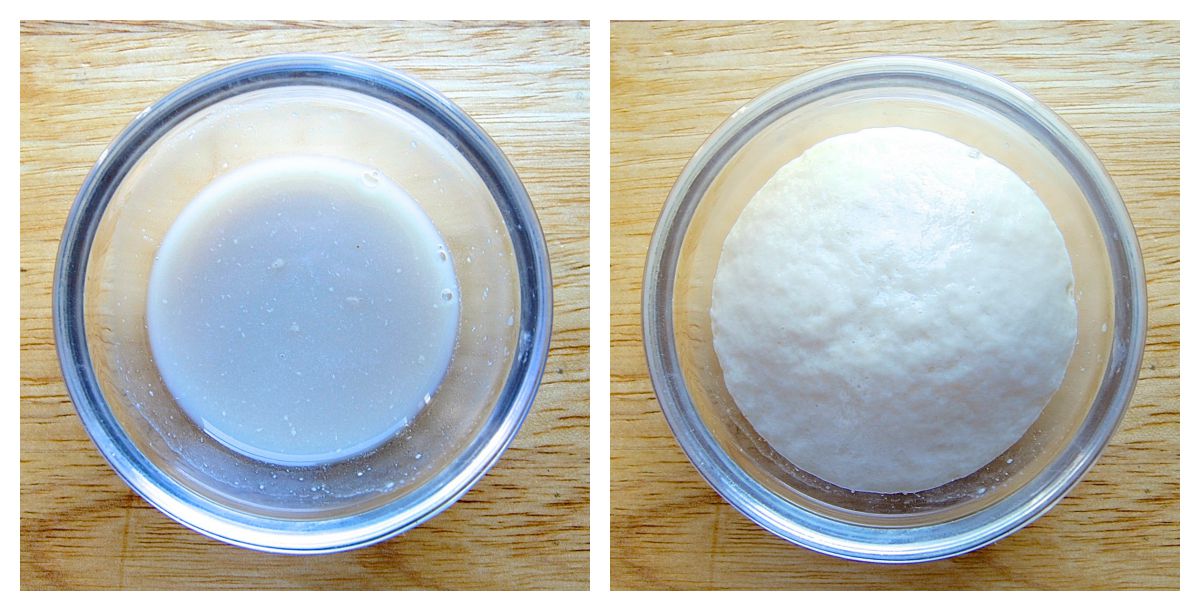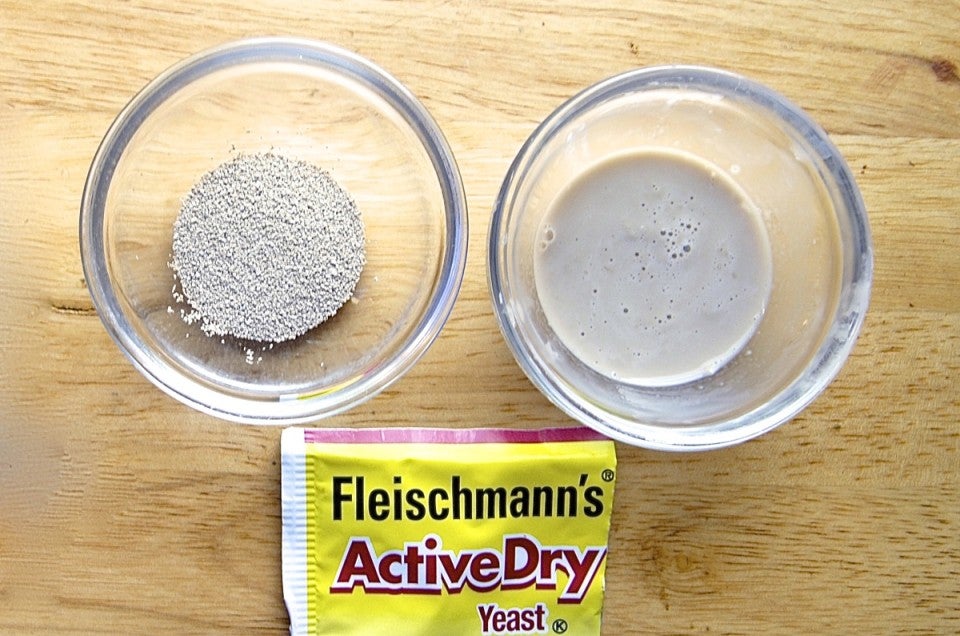


Is it really necessary to dissolve active dry yeast before using it in bread? Inquiring bread bakers want to know!
You may have heard over the past year or so that active dry yeast (ADY) has been reformulated into a smaller particle size, and can now be used without dissolving it first – as had always been the requirement.
Note: Dissolving yeast and proofing yeast are two distinct processes. First we'll cover dissolving; see the end of this post for information on when to proof yeast.
Really – you don't need to dissolve ADY in lukewarm water before using it?
Let's put it to the test.
On the left, dough made with undissolved ADY – yeast simply added along with the other dry ingredients. On the right, dough made with dissolved yeast.
An hour later, the dough has risen. I don't see any difference – do you?
Let's shape some dinner rolls.
I decided to bake the rolls all in one pan, to make sure neither pan nor placement in the oven would affect their rise. Top row are the rolls using dissolved yeast; bottom row, undissolved. (If you're really tracking this, the roll at the left in the middle row uses dissolved yeast; middle roll at right, undissolved.)
The rolls rise for an hour. I still don't see any difference.
Nor is there any difference once they're baked.
So, inquiring bakers – inquire no more! You don't need to dissolve active dry yeast in lukewarm water before using it. (Even though it still says you should dissolve it on the back of the yeast packet, if you buy your yeast in packets.)
Now, what about that "proofing" stuff?
Proofing yeast – or as it used to be called, "proving" yeast – serves as proof that your yeast is alive and active. And how, exactly, do you do this?
Well, if you're using a typical 1/4-ounce packet of yeast, just follow the directions on the back: dissolve the contents of the packet in 1/4 cup warm water with 1 teaspoon sugar. After 10 minutes, the mixture should be bubbly. Once you've proved the yeast is alive, go ahead and add it to your recipe – reducing the water in the recipe by 1/4 cup.
I actually never proof yeast. I use SAF instant, purchased from our Web site; I know it's always fresh and vigorous.
But I did put a packet of Fleischmann's to the test.
Yeast dissolved in warm water with sugar on the left; same yeast, 20 minutes later. It only had a few small bubbles after 10 minutes, but 20 minutes did the trick.
Were you expecting foamy? Nah. But it's definitely puffy.
And that's proof enough the yeast is alive.
So, bottom line: dissolve yeast in warm water with a bit of sugar to prove that it's alive. This shouldn't really be necessary if the yeast isn't close to its expiration date; and if you purchased it from a store with decent turnover. However, if you have any doubts about your yeast being good, go ahead and proof it.
But dissolve active dry yeast before using it – just because? No need. Add ADY to the bowl right along with the rest of the dry ingredients; your bread will rise just fine.
P.S. My fellow blogger, MaryJane, said I should let you know that if you want to dissolve your active dry yeast before using it, go right ahead. She's right: no problem with dissolving it, if that's the way you've always done it and want to continue.


